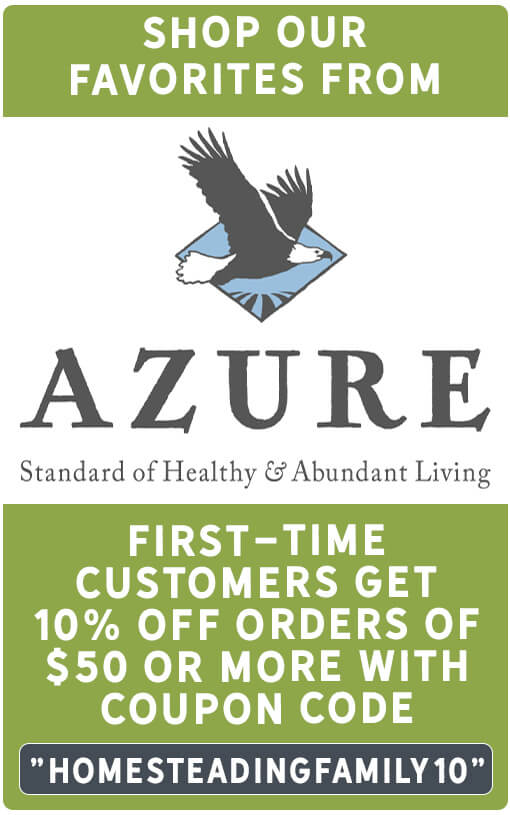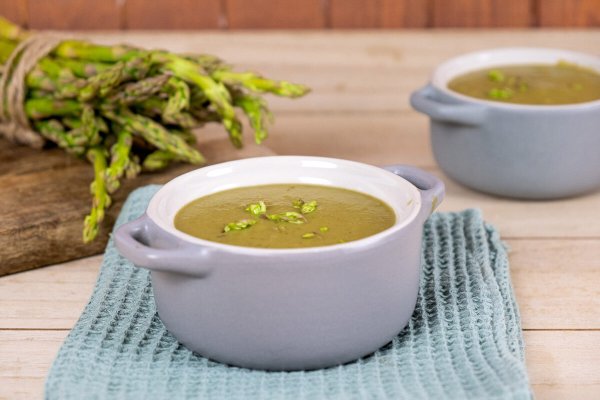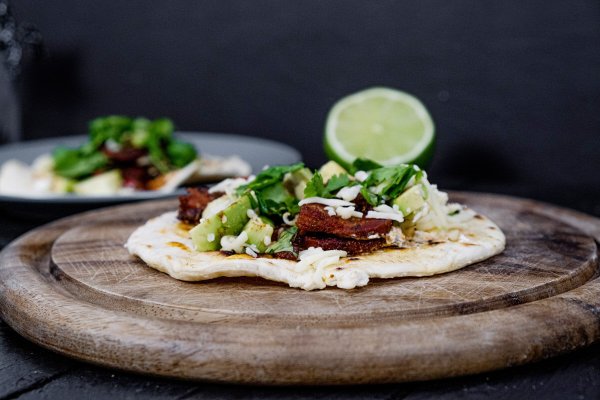When it comes to cooking with cast iron, there’s no better cookware. Whether a Dutch oven, skillet, pot or pan, cast iron is always what I reach for. And enameled cast iron comes with some great benefits. Let’s dive deeper into what makes enameled cast iron so great and why you might want to invest in these generational pieces for yourself (and your future family).
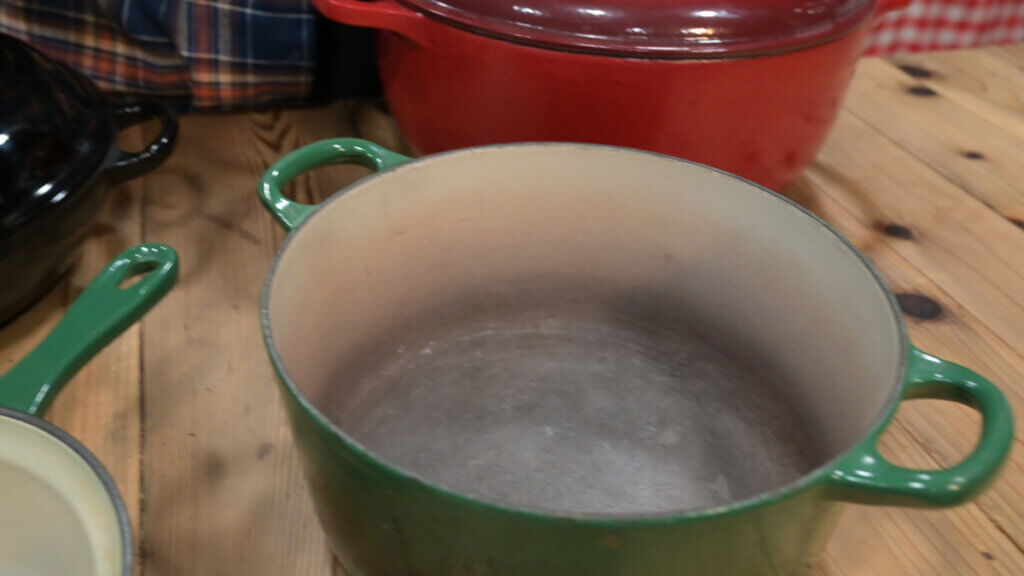
Why I Love Enameled Cast Iron
I have a piece of enameled cast iron that’s almost as old as I am (pictured above). No need to know how old that is! Though that pot has been well-loved, it still has at least one more generation of use.
Though I love my Stargazer cast iron skillet (it lives on the stove because I use it so often), I do love my enameled pieces because of the benefits they have in the kitchen.
Check out these posts if you want to learn more about how to choose the best traditional cast iron, stripping and re-seasoning a cast iron pan, how to properly clean and maintain the seasoning of a cast iron pan, and even how to cook scrambled eggs in a cast iron pan (so they don’t stick).
But if you’re reading this post, you’re probably in the market for enameled cast iron. So let’s get right into the benefits…
What Is Enameled Cast Iron?
Simply put, enameled cast iron is cast iron that’s been coated with a thin layer of enamel. This glass-like enamel surface creates a smooth, non-porous and non-reactive cooking surface.

Five Benefits of Enameled Cast Iron
1. Doesn’t Require Seasoning
This is perhaps one of the biggest benefits of enameled cast iron. Seasoning cast iron can be time-consuming; if you mess up the seasoning, stripping and re-seasoning is a hassle.
The enamel coating on the inside of the pot (and lid) acts like a seasoning that lasts generations. There are exceptions, but check out my tips below on properly caring for and cooking in enameled cast iron.

2. Cook Acidic and Alkaline Foods
Because of the enamel coating on the inside of the pot, you can cook virtually anything. No need to worry about damaging your seasoning with long-simmering acidic foods or tomato-based products.
3. Will Not Rust
Unlike traditional cast iron, enameled cast iron will not rust! (Be sure to read the one caveat below.)
Furthermore, you can soak an enameled pot or pan in hot soapy water without fear of ruining the precious seasoning. This makes cleaning off any stuck-on food much easier.

4. Extremely Versatile
Enameled cast iron comes in so many shapes, sizes and colors to choose from. Furthermore, you can bake, boil, broil, saute, marinate, roast, and even refrigerate foods.
5. Will Last Generations
As mentioned, I’ve had one enameled Dutch oven for decades. It’s well-loved, and the enamel coating doesn’t look quite as pretty anymore, but the years of use and love give it incredible charm and character.
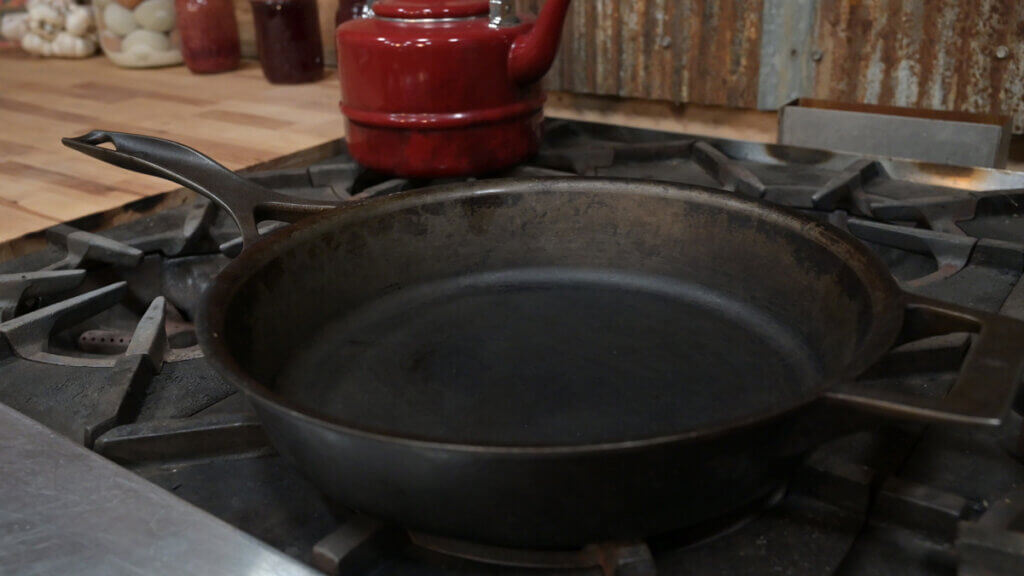
Enameled Cast Iron vs. Cast Iron
Though there are many benefits to enameled cast iron pans, there are some features that make traditional cast iron pans more appealing, and vice-versa.
Seasoning
Cast iron pans do need to be seasoned prior to use (even those that come “pre-seasoned” usually need additional seasoning to make them truly non-stick). However, once a cast iron pan is well seasoned, it’s virtually non-stick and can cook foods with ease.
Enameled cast iron does not require any seasoning at all!

Non-Stick
Traditional cast iron can become extremely non-stick once properly seasoned. Enameled cast iron, however, is not non-stick, and you will need to grease or oil it to avoid sticking.
Some food may stick to the pan if you cook on it without oil or cook at high heat. Therefore, traditional cast iron pans work better for foods that need to be cooked at higher heat.
Dishwasher Safe
Enameled cast iron is listed as dishwasher safe. Though I don’t use the dishwasher myself and wouldn’t recommend it, it is worth mentioning as a difference.
If you’ve ever had your traditional cast iron accidentally go through the dishwasher, you know what a rusty mess comes out on the other side. This won’t happen if your enameled pans accidentally get run through the dishwasher.
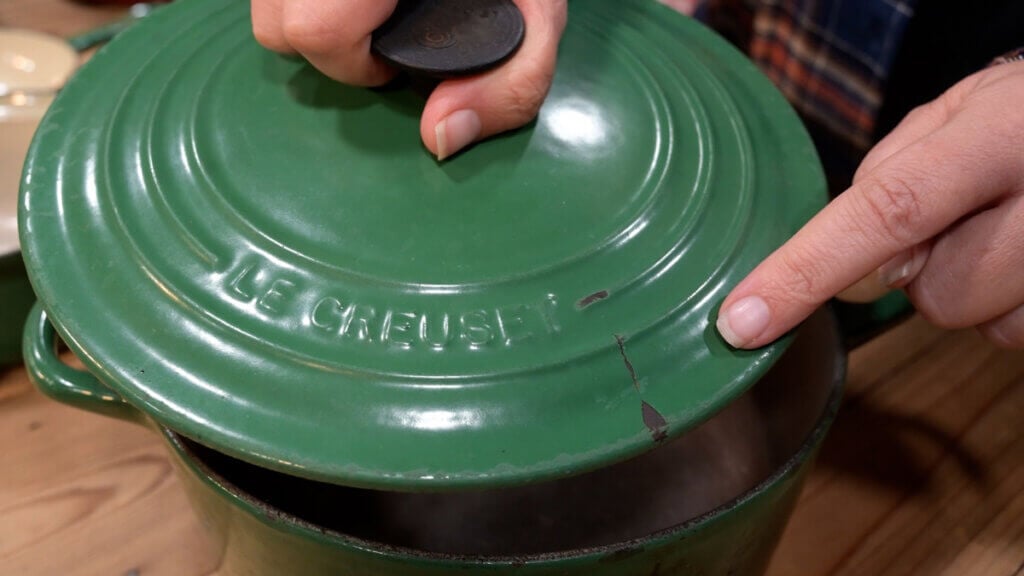
Damage
Unlike traditional cast iron pans, enameled cast iron can be damaged. Make sure you don’t drop them or bang them together, as the enamel coating can chip. This exposes the cast iron below which can then rust. Also, be careful when stacking pots or pans together.
Though it’s not super delicate, you do want to avoid banging or dropping your pans as this can cause damage or chipping. You also should only use wooden, silicone or nylon utensils that won’t scratch the enamel coating.
Cooking Heat
Traditional cast iron can be preheated to screaming hot and can cook or sear your food very well. With enameled cast iron, you’ll want to avoid high heat on an empty pan or raising the temperature too quickly because this can cause permanent damage.
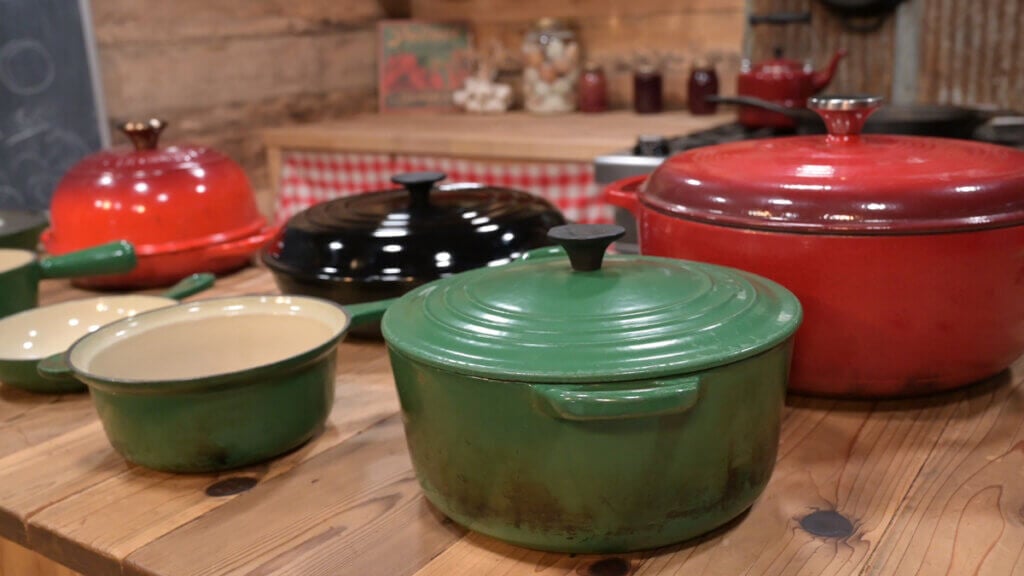
Types of Enameled Cast Iron Pans
Enameled cast iron comes in all different shapes, sizes and colors for you to choose from. There’s virtually a pot or pan for every need in the kitchen. Be sure to choose the right pot or pan for the job for the best results.
Lodge Enameled Cast Iron
Lodge cast iron is inexpensive compared to other brands. They have a nice range of color options and many pieces to choose from.
Lodge is a bit heavier than the fancier, more expensive options, but it’s a great solid piece of cooking equipment.
The downside to Lodge is that they’re all made in China. You can also find some off-name brands which are made in China, so if you’re ordering somewhere like Amazon, do know that the quality can vary quite a bit, so it’s my recommendation to keep with the name brands.
Staub and Le Creuset Enameled Cast Iron
The spendier options for enameled cast iron are going to be your Staub and Le Creuset brands. These are made in France but do be prepared that they’re much more expensive.
So are they worth the extra cost? In my opinion, you’re getting a higher quality product that doesn’t weigh quite as much, and you can rest assured you’ll get what you pay for.
I have both Lodge and Le Creuset and they both perform extremely well in the kitchen. One does not out-perform the other, so it’s my recommendation to purchase what you can afford.


How to Clean Enameled Cast Iron
Everyday Cleaning
Before washing enameled cast iron, make sure it’s completely cooled down, then wash it with warm soapy water and dry completely.
Though most enameled cast iron dishes say they’re dishwasher safe, I wouldn’t recommend using the dishwasher as many detergents are very harsh and could reduce the longevity of the enamel coating.
Avoiding Rust
The benefit of using enameled cast iron is they’re less prone to rust. However, the rim of the pot or pan and the rim of the lid can rust. This is why it’s extremely important to completely dry your pans after washing to ensure these portions of the cooking vessel don’t rust.
Every so often, it’s a good idea to oil the rims of the lid and vessel to keep it conditioned and protected.
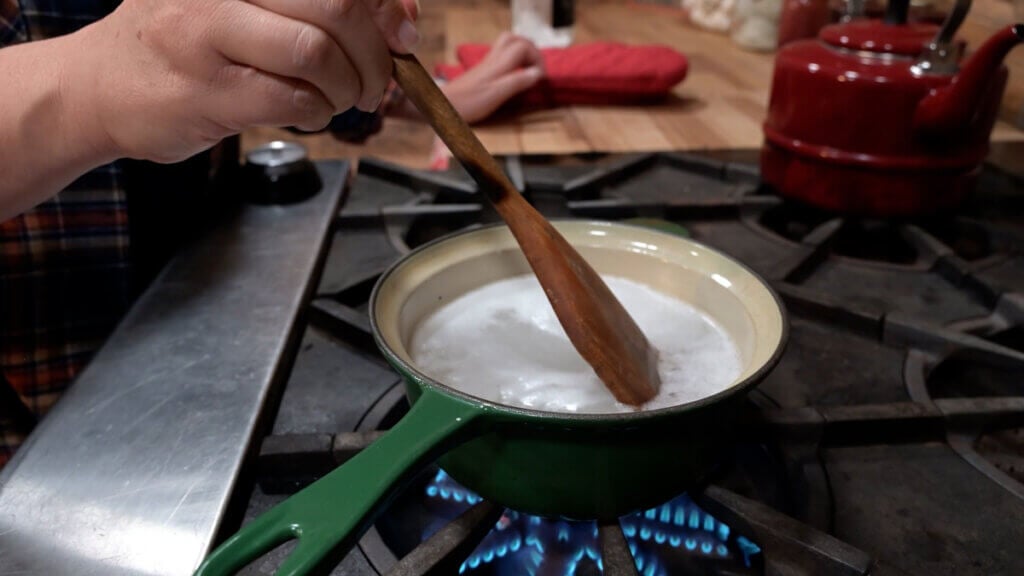
Cleaning Stuck On Food
If you find that after cooking you have some stuck-on food that’s hard to clean, it may be that you cooked at too high of a temperature. To help release the stuck-on food, boil two cups of water and four tablespoons of baking soda in the pot or pan. Use a wooden spatula to help release the stuck-on food, then wash and dry as normal.
Cleaning Stains
After multiple uses you may notice some staining and signs of wear on the enamel. This is completely normal and doesn’t affect the performance (and I think it adds a ton of character).
If you really don’t like the look of it, you can use a gentle ceramic cleaner, such as Barkeeper’s Friend.
Homesteading Hack: Never use something like a brillo pad or steel wool.


How to Cook with Enameled Cast Iron
As mentioned before, you can broil, boil, bake, cook, saute, braise, and pretty much anything else with your enameled cast iron cookware. They come in various shapes and sizes, from small little saute pans all the way up to large Dutch ovens that you can bake a chicken in.
Pre-Heat Slowly and on Low Heat
Unlike traditional cast iron, you don’t want to preheat enamel cast iron too hot, too fast, because this can damage the enamel coating.
Instead, turn the burner or heat source on low to medium-low heat, add cooking oil (if needed) and slowly bring it to temperature.
Enameled cast iron Dutch ovens make an excellent option for baking bread. Since you place the enameled cast iron into the oven when it’s cold, the oven slowly heats the pan making it safe to use for bread baking.
Enameled cast iron will last for generations if you take good care of it and use it well. It will be a wonderful asset in your kitchen, but another option is to use traditional cast iron. Be sure to check out our other resources on the blog posts below.
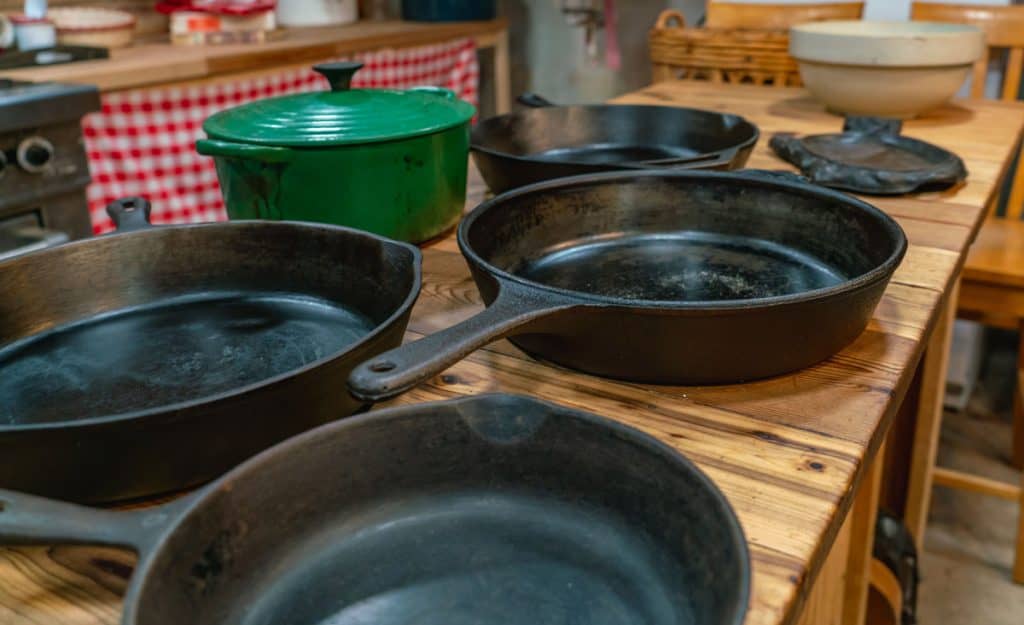
More Posts You May Enjoy
- How to Choose the Best Cast Iron Cookware (New or Used)
- How to Clean Cast Iron to Maintain the Seasoning
- Stripping and Seasoning a Cast Iron Pan
- How to Cook Scrambled Eggs in Cast Iron
- Woodstove Cooking on the Homestead
- Growing and Pressing Your Own Seed Oils
- Knife Sharpening Basics
- Eating Well on a Budget
- Rendering Lard (or Tallow) for Homestead Cooking
- Meal Planning on the Homestead







